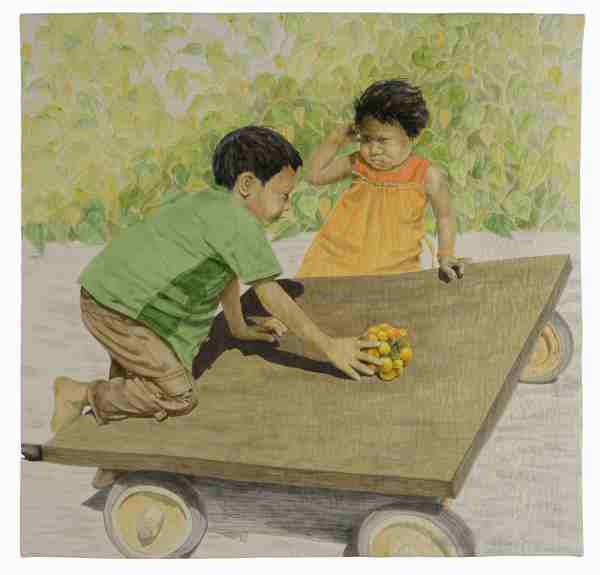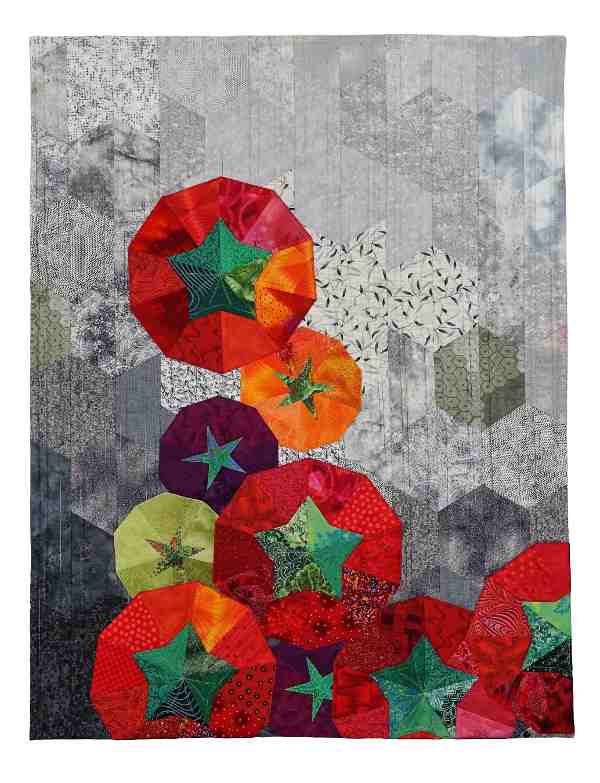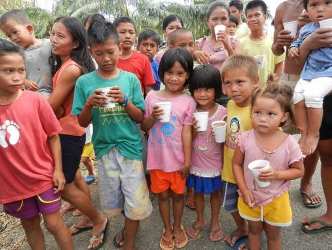What Is the Cultural Relevance of Food?

Food in all its myriad forms and meanings is the subject for an upcoming exhibit at the National Quilt Museum.
“Food For Thought,” presented by the Studio Art Quilt Associates (SAQA), is a selection of 34 fabric artists’ responses to the concept of food, its production, preparation and the cultural relevance of food today. The exhibit will run from April 10 through July 8.
“Food is such a powerful and universal component of human experience,” remarked National Quilt Museum CEO Frank Bennett. “Every one of us has a relationship with food. As we go through our lives this relationship evolves. The artists in this exhibit capture the essence of food from many different perceptions.”
[ Eating Habits of a Modern Family: Then and Now ]
SAQA’s membership is global, thus the diversity of ideas presented in the exhibit’s 34 quilts is equally all encompassing.
Citizens of the developed world, for instance, typically enjoy food in abundance and have largely positive associations and rich traditions surrounding the harvesting and production of food.
On the other hand, food scarcity and malnourishment continue to be very real problems in the modern world, in spite of modernization elsewhere. These concerns are brought to light in several of the exhibit’s quilts.
[ Why Insecurity Persists in India’s Food Security Act ]
Culturally speaking, few characteristics define a place more than its food. Local and national cuisines express, perhaps more effectively than words, the essence of a place.
Many of the titles, patterns, fabric choices and motifs presented in “Food For Thought” are deliberately evocative of specific places and cultures.
One of the aspects of globalization has been to erase many of these local distinctions from the public imagination, but enclaves of tradition remain. For many artists across all media, a primary motivation of their work is to preserve the uniqueness of local places and people.
The quilts in the exhibit represent a variety of interpretations of the theme – from single pieces of fruit to panels that communicate the significance of food within family and local contexts.
In the Western artistic tradition, food as a component of still life painting has a long and storied history, and “Food For Thought” pays homage to that history as well.

Founded in 1989, the nonprofit Studio Art Quilt Associates supports and promotes the art of quilting through education and outreach programs, including renowned exhibitions and publications.
From an original group of 50 fiber artists, the organization now boasts a worldwide membership exceeding 3,000. The mission and vision of SAQA dovetails with that of the National Quilt Museum.
“Food For Thought” is just one of many fascinating exhibits that will adorn the walls of the National Quilt Museum in 2015. A complete schedule of upcoming exhibits is available here.
The National Quilt Museum is devoted to quilts and fiber art. A destination for art enthusiasts worldwide, annually the Museum welcomes visitors from all 50 U.S. states and over 40 foreign countries from all corners of the globe.
The Museum’s onsite and traveling exhibits are viewed by over 120,000 people per year. In addition, over 6,000 youth and adults participate in the Museum’s educational opportunities on an annual basis.
The Museum is located in a 27,000-square-foot facility in Paducah, Kentucky. Its mission is to, “Advance the art of today’s quilters by making it accessible to new and expanding audiences worldwide.”






